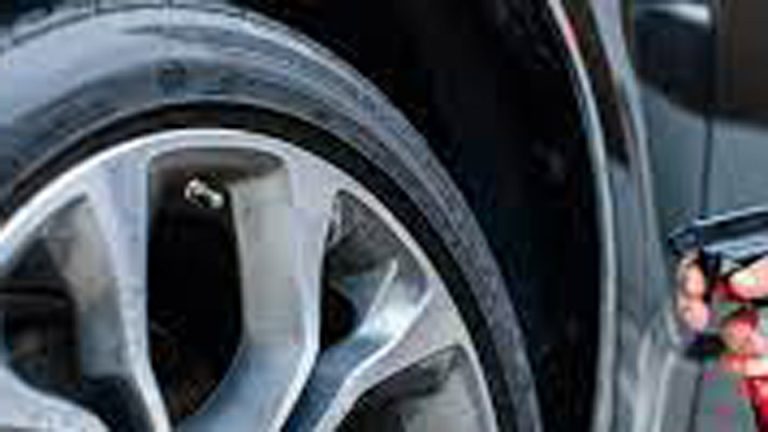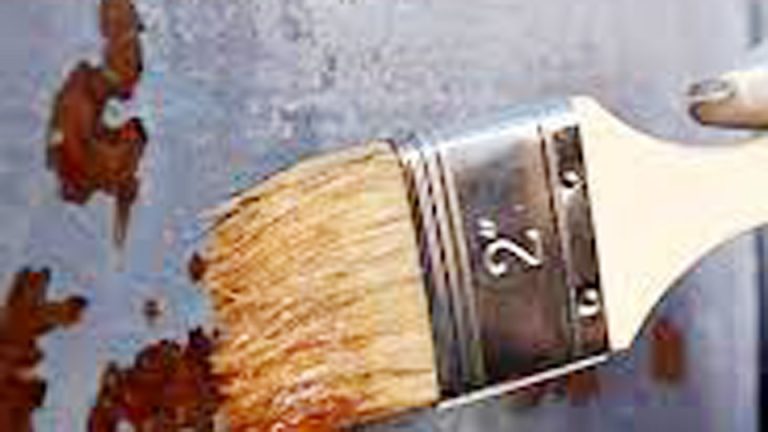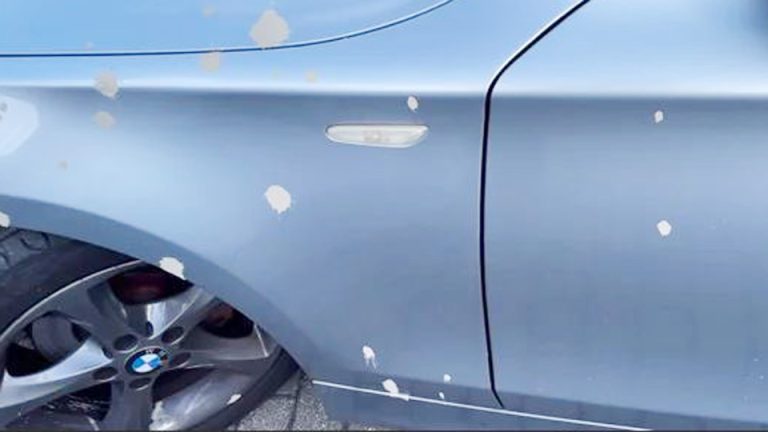Yes—it definitely can. Whenever someone in the shop asks me “Does Brake Fluid Remove Car Paint?”, I tell them the truth: most types of brake fluid are highly corrosive to automotive paint if left sitting on the surface. The chemicals in brake fluid, especially older glycol-based types, can soften and eat away at the clear coat, leaving behind dull spots, discoloration, or even peeling if not cleaned quickly. I’ve seen cars come in with permanent paint damage just because a few drops of brake fluid were ignored.
The good news is, brake fluid doesn’t destroy paint instantly. If you catch it right away and wipe it off with a clean cloth, then rinse the area with water and car soap, you can usually prevent damage. The real trouble comes when it’s left to sit—especially under the sun—because the heat speeds up the chemical reaction.
In this guide, I’ll break down why brake fluid affects car paint, which types are more harmful, and what steps you should take immediately if you spill some on your vehicle. That way, you can protect your finish and avoid an expensive paint repair.

Image by subaruforester
Why Brake Fluid Matters for Your Car
Brake fluid is the lifeblood of your vehicle’s braking system. It’s a hydraulic fluid that transfers the force from your brake pedal to the brake pads, allowing your car to stop safely. Without it, your brakes wouldn’t work, and you’d be in serious trouble. But beyond safety, brake fluid also impacts performance, reliability, and even maintenance costs. Using the wrong type or neglecting it can lead to sluggish braking, corrosion in your brake lines, or even total brake failure.
I’ve seen plenty of cars roll into the shop with spongy pedals or faded paint spots because the owner didn’t realize how finicky brake fluid can be. It’s not just about keeping your brakes working—it’s about protecting your entire vehicle, including that shiny exterior you’ve spent hours waxing.
What Is Brake Fluid and What Does It Do?
Brake fluid is a specially formulated liquid designed to operate under high pressure and extreme temperatures. It’s typically glycol-based (DOT 3, DOT 4, or DOT 5.1) or silicone-based (DOT 5), with each type having specific properties for different vehicles. Its main job is to transmit hydraulic pressure from the master cylinder to the brake calipers or wheel cylinders, squeezing the brake pads against the rotors or drums to slow or stop your car.
The fluid also lubricates components in the brake system and prevents corrosion. However, brake fluid is hygroscopic (it absorbs water), which can lower its boiling point and lead to performance issues over time. That’s why regular maintenance is critical.
Common Problems with Brake Fluid
From my years in the garage, here are the most common brake fluid issues I’ve seen:
- Water Contamination: Brake fluid absorbs moisture from the air, especially in humid climates. This can cause a spongy pedal or reduced braking power.
- Spills on Paint: Brake fluid is a solvent for automotive paint. Even a small drip can strip clear coat or paint if not cleaned quickly.
- Overheating: Old or low-quality fluid can boil under heavy braking, leading to brake fade.
- Mixing Types: Mixing incompatible fluids (like DOT 3 with DOT 5) can cause sludge or seal damage, wrecking your brake system.
I once had a customer bring in a 2008 Honda Civic after a DIY brake flush. They’d spilled DOT 3 on the fender and didn’t wipe it off for a couple of hours. The result? A dull, etched spot that needed a professional repaint. Moral of the story: treat brake fluid like it’s radioactive when it’s near your car’s exterior.
Does Brake Fluid Really Remove Car Paint?
Yes, brake fluid can remove or damage car paint, and here’s why. Most brake fluids (especially DOT 3 and DOT 4) are glycol-based, which means they act like a solvent when they come into contact with automotive paint or clear coat. The longer the fluid sits, the more it eats away at the finish, leaving behind dull spots, discoloration, or even bare metal in severe cases.
I’ve seen this firsthand on a 2017 Toyota Camry that came into the shop. The owner had been topping off the brake fluid reservoir and accidentally dripped some on the hood. By the time they noticed, the paint was already bubbling. Quick action can save you, but neglect a spill for too long, and you’re looking at a costly repair.
How to Handle Brake Fluid Spills on Paint
If you spill brake fluid on your car, act fast. Here’s a step-by-step guide based on what I do in the shop:
Blot, Don’t Wipe: Use a clean, absorbent cloth or paper towel to blot the spill immediately. Wiping can spread the fluid and damage a larger area.
Rinse with Water: Flush the area with plenty of water to dilute the brake fluid. A hose or spray bottle works well.
Clean with Soap: Use a mild car wash soap and a microfiber cloth to gently clean the area. Avoid harsh detergents that could strip wax.
Dry and Inspect: Dry the area with a clean microfiber towel and check for damage. If the paint looks dull or etched, you may need to polish or repaint.
Polish if Needed: For minor damage, a light polishing compound can restore the clear coat. For deeper damage, consult a professional body shop.
Pro Tip: Keep a spray bottle of water and a microfiber cloth in your garage for quick spill response. I learned this the hard way after a DOT 4 mishap on my own Chevy Silverado.
Preventing Brake Fluid Damage
Prevention is better than repair. Here are some shop-tested tips to keep brake fluid away from your paint:
- Use a Funnel: When topping off or refilling the reservoir, use a clean funnel to avoid spills.
- Cover Surrounding Areas: Lay down painter’s tape or a cloth around the reservoir before opening it.
- Work Slowly: Rushing leads to spills. Take your time when handling brake fluid.
- Check the Cap: Ensure the reservoir cap is secure to prevent leaks during driving.
When and Why to Replace Brake Fluid
Brake fluid doesn’t last forever. Most manufacturers recommend flushing and replacing it every 2–3 years or 30,000 miles, but it depends on your vehicle and driving conditions. For example, if you’re in a humid area or do a lot of stop-and-go driving, you might need to replace it sooner.
Signs Your Brake Fluid Needs Replacement
Here’s what I look for when inspecting brake fluid:
- Dark Color: Fresh brake fluid is clear or slightly amber. If it’s dark brown or black, it’s contaminated and needs a flush.
- Spongy Pedal: If your brake pedal feels soft or mushy, water in the fluid could be the culprit.
- Brake Fade: If your brakes feel weak under heavy use, the fluid might be boiling due to low quality or age.
- Low Fluid Level: A low reservoir could indicate a leak or worn brake pads, both of which need immediate attention.
I had a customer with a 2013 Dodge Ram who ignored a spongy pedal for months. By the time they brought it in, the brake fluid was so contaminated it had corroded the master cylinder. A $50 flush could’ve saved them a $400 repair.
How to Replace Brake Fluid: A Step-by-Step Guide
Flushing brake fluid isn’t rocket science, but it requires care. Here’s how I do it in the shop:
- Gather Tools: You’ll need a wrench (usually 8mm or 10mm for bleeder valves), a brake fluid catch bottle, a turkey baster or syringe, fresh brake fluid (check your owner’s manual for the right DOT type), and a helper.
- Lift the Vehicle: Safely jack up the car and secure it on jack stands. Remove the wheels for easier access to the bleeder valves.
- Remove Old Fluid: Use the turkey baster to suck out as much old fluid as possible from the reservoir. Don’t empty it completely to avoid introducing air.
- Refill with New Fluid: Pour fresh brake fluid into the reservoir, keeping it above the minimum line.
- Bleed the Brakes: Start at the wheel farthest from the master cylinder (usually the rear passenger side). Attach the catch bottle to the bleeder valve, have your helper pump the brake pedal, and open the valve to release old fluid. Repeat until clean fluid flows out.
- Repeat for All Wheels: Work your way to the closest wheel (usually front driver’s side). Keep topping off the reservoir to avoid air bubbles.
- Check for Leaks: Inspect all connections and ensure the reservoir cap is secure.
- Test Drive: Take the car for a slow test drive to confirm the pedal feels firm.
Common Mistake: Don’t mix DOT types. I once saw a DIYer mix DOT 3 with DOT 5, thinking “it’s all brake fluid.” The result was a gelled mess that clogged the brake lines and cost a fortune to fix.
OEM vs Aftermarket Brake Fluid: Which Is Better?
Choosing between OEM (original equipment manufacturer) and aftermarket brake fluid can be tricky. Here’s a breakdown based on my experience working on everything from Fords to Toyotas.
| Factor | OEM Brake Fluid | Aftermarket Brake Fluid |
|---|---|---|
| Quality | Designed specifically for your vehicle | Varies; top brands match or exceed OEM |
| Price | $10–$20 per quart | $5–$15 per quart |
| Availability | Dealer or specialty retailers | Widely available (AutoZone, Advance, etc.) |
| Warranty | Often required for warranty compliance | May void warranty if not DOT-compliant |
| Performance | Reliable but not always the highest boiling point | High-performance options available |
OEM Brake Fluid
OEM fluids, like Ford Motorcraft or Toyota Genuine, are formulated to meet your vehicle’s exact specifications. They’re a safe bet for newer cars under warranty or for owners who want peace of mind. For example, I always recommend OEM fluid for late-model vehicles like a 2020 Honda Accord to avoid any warranty disputes.
Pros:
- Guaranteed compatibility
- Trusted by manufacturers
- Consistent quality
Cons:
- More expensive
- Harder to find outside dealerships
- Not always the best for high-performance driving
Aftermarket Brake Fluid
Aftermarket brands like ATE, Motul, or Prestone offer solid alternatives. I’ve used Motul RBF 600 on my own project cars for track days because of its high boiling point (594°F dry). For daily drivers, Prestone DOT 3 is a reliable, budget-friendly option available at most auto parts stores.
Pros:
- Often cheaper
- Wide availability
- High-performance options for enthusiasts
Cons:
- Quality varies by brand
- Risk of counterfeit products
- May not meet strict OEM warranty requirements
My Take: For most daily drivers, a reputable aftermarket brand like ATE or Motul is fine as long as it meets the DOT rating in your owner’s manual. For newer or luxury vehicles, stick with OEM to play it safe. Always check the label for the correct DOT rating (e.g., DOT 3, DOT 4, or 5.1).
How to Spot Genuine vs Fake Brake Fluid
Counterfeit brake fluid is a real problem, especially with online purchases. I once had a customer buy a “deal” on Amazon, only to find the fluid was watered-down junk that caused brake fade. Here’s how to avoid fakes:
Buy from Reputable Sources: Stick to trusted retailers like AutoZone, NAPA, or directly from the manufacturer. Avoid sketchy online marketplaces.
Check Packaging: Genuine brands have high-quality labels, tamper-proof seals, and batch numbers. Look for misspellings or blurry logos.
Verify DOT Rating: Ensure the fluid meets the DOT standard listed in your owner’s manual. Fake fluids often list vague or incorrect specs.
Test the Fluid: If you’re suspicious, a brake fluid tester (about $20 at auto parts stores) can check for water content or incorrect boiling points.
Installation and Maintenance Tips for Brake Fluid
Here are some practical tips I’ve picked up over years of brake jobs:
Use the Right Tools: A flare nut wrench prevents stripping bleeder valves. I like the Capri Tools 6mm/8mm set for most vehicles.
Work Clean: Brake fluid attracts dirt, so keep your workspace clean to avoid contaminating the system.
Bleed in Order: Always start with the wheel farthest from the master cylinder to ensure a complete flush.
Check for Air: Air bubbles in the system cause a spongy pedal. If you suspect air, re-bleed the brakes or use a vacuum pump.
Dispose Properly: Brake fluid is hazardous waste. Take it to a recycling center or auto parts store that accepts used fluids.
Safety Tip: Wear gloves and safety glasses. Brake fluid is corrosive and can irritate skin or eyes. I learned this after a splash got on my hands during a rushed job—ouch.
Anecdote: The Brake Fluid Fiasco
A few years back, I was helping a friend flush the brakes on his 2006 Jeep Wrangler. He was new to DIY repairs and didn’t realize brake fluid could damage paint. While topping off the reservoir, he spilled a good amount on the fender and didn’t notice until we were done. By then, the paint was peeling like a bad sunburn. We managed to save most of it with quick cleaning and polishing, but it was a close call. Now, I always keep a rag and water handy when working with brake fluid.
Make Smarter Brake Fluid Choices
Brake fluid is a small but mighty part of your car’s braking system. It keeps you safe, ensures smooth performance, and, if mishandled, can ruin your paint job. By choosing the right fluid (OEM for warranty-bound vehicles, reputable aftermarket for others), maintaining it regularly, and acting fast on spills, you can protect both your brakes and your car’s finish.
FAQ: Common Brake Fluid Questions
Can I mix different types of brake fluid?
No, mixing incompatible types (like DOT 3 with DOT 5) can cause chemical reactions, sludge, or seal damage. Stick to the DOT rating specified in your owner’s manual. If you’re unsure, do a full flush with the correct fluid.
How often should I replace my brake fluid?
Most manufacturers recommend every 2–3 years or 30,000 miles. Check your owner’s manual, and flush sooner if you notice a spongy pedal or dark fluid.
What happens if brake fluid gets on my car’s paint?
Brake fluid can strip paint or clear coat if left on too long. Blot it immediately, rinse with water, and clean with soap. Minor damage can be polished; severe cases need repainting.
Is aftermarket brake fluid safe to use?
Yes, if it’s from a reputable brand like ATE, Motul, or Prestone and meets your vehicle’s DOT rating. For warranty-bound cars, stick with OEM to be safe.
How can I tell if my brake fluid is bad?
Dark, murky fluid, a spongy pedal, or brake fade are signs of bad fluid. Use a brake fluid tester to check for water contamination, or take it to a shop for inspection.



